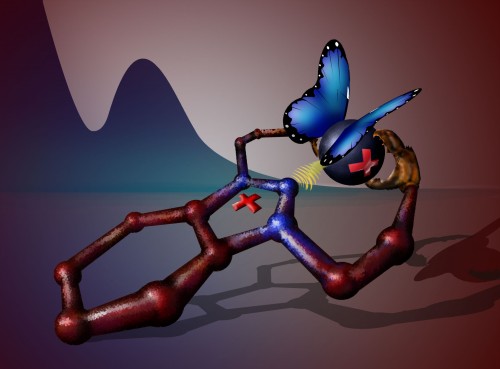The research was published in the journal Chemical Science

Two years ago, the researchers discovered a new type of chemical link and thus completed, in fact, a "puzzle" in the field of basic chemical science; Both discoveries open the door to the development of new catalysts with special properties that were not known until now
The researchers of the Shulich Faculty of Chemistry at the Technion discovered rare chemical substances that show the ability to bind a charged metal + to a charged metal + and thus opened the door to the development of new catalysts with special properties that were not known until now.
"The field of catalysis is a very broad thing," explains Professor Mark Gandelman from the Shulich Faculty of Chemistry at the Technion. "It affects our daily lives on many levels. With the help of catalytic processes we prepare innovative materials with unique properties and in fact much of what serves us is done by catalysis, which is at the heart of our quality of life in food, medicine, cars, airplanes and more. The global catalysis market is estimated at 500 billion dollars."
Catalysis is based on the activity of a catalyst (a chemical substance that serves as a catalyst and even opens new ways to prepare valuable substances that cannot be produced without it). Many catalysts are built mainly from a metal core and organic material around it, which actually holds it. The properties of the metal (that is, the properties of the catalyst) are affected by the organic material that surrounds it.
There is a chemical bond between the metal and the organic matter. The type of bond is very important, because it gives unique properties to the metal. Professor Gendelman and the researchers in his laboratory discovered about two years ago an innovative type of linking organic material to metal. This is a new link between a material based on positively charged nitrogen and a metal. This is the first time that a bond based on positively charged nitrogen has been discovered. Until now, similar links were mainly based on carbon and materials from this family, and in fact the discovery by the Technion researchers completed the "missing piece of the puzzle". Technion researchers have now shown that substances called nitrenium (based on nitrogen +) can form a chemical bond with a metal that is also + (positively) charged. As we know, in nature Plus and Plus repel each other (like the charges in batteries). In chemistry they also repel each other, but because chemical particles carry nuclei and electrons - they are also attracted to each other.
"We showed a connection between a positively charged metal and a positively charged non-metal (Laganda)," explains Professor Gendelman. "These materials are rare and have basic scientific interest and also a great potential to be used as catalysts for important reactions of interest in chemistry, such as turning inert and simple carbons into functional materials of value in industry or in everyday life."
Following the discovery, it may be possible in the future to improve or discover innovative chemical processes that will save energy and significantly reduce a lot of waste. "There is potential here for green chemistry," explains Professor Gendelman. "Chemical waste is a global problem".
